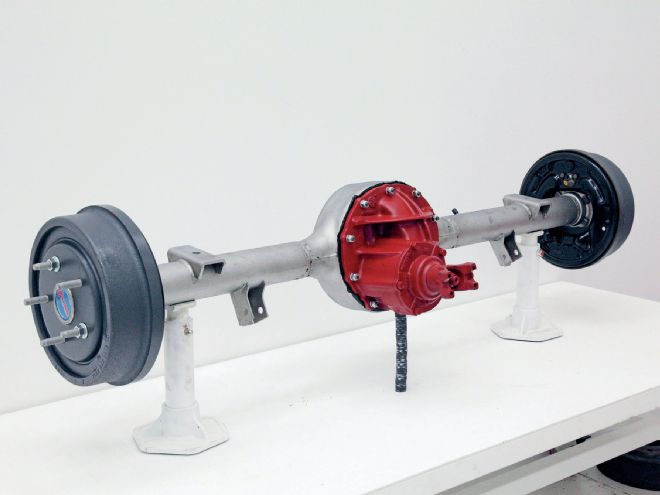
When it came time to lower the rear of our 1969 Ford F-100 project, we knew it was only best to drop the rearend and at least do a quickie "garage floor" rebuild before flipping the springs and bolting it all back together. The more we thought about it, however, we decided that it would be better to simply truck it on over to the professionals at Currie Enterprises and have them give it a good run through, teaching us a few things in the process.
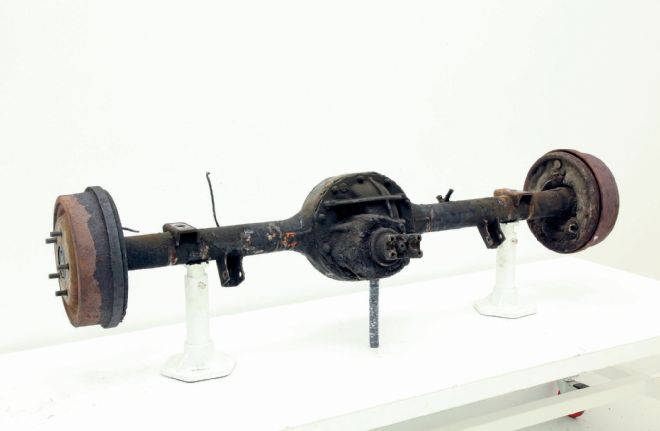 Here’s our ’69 F-100 factory 9-inch rearend, ready for disassembly.
Here’s our ’69 F-100 factory 9-inch rearend, ready for disassembly.
For many years Currie was known as the place to take a 9-inch Ford rearend for a rebuild. But with the company now producing nearly every item to build a rearend from scratch, it's usually cost-prohibitive to rebuild an old rear when you could custom order a brand-new one from Currie for less. Factor in the shipping of your old rearend to and from Currie's facility, and the fact that it could be an unusable core, the new, crate rearend option sounds even sweeter.
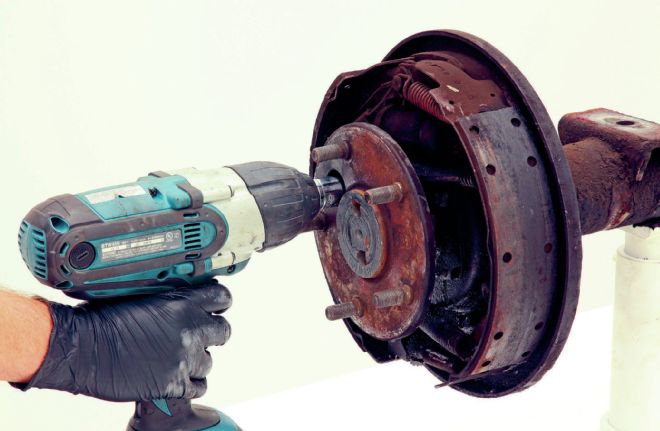
01 Using the access hole in the axle flange, the four bolts that hold the axle bearing in place are removed.
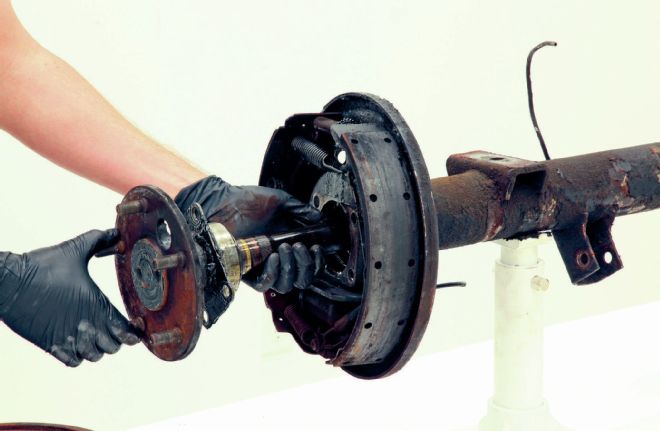
02 Then, the axle, along with its pressed-on bearing, is removed.
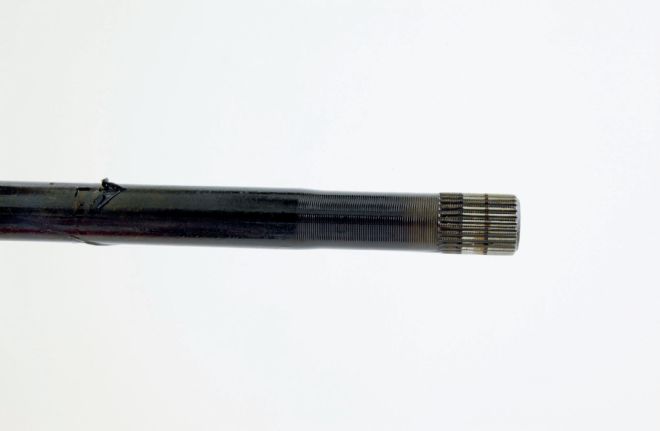
03 The black line running perpendicular over the splines illustrates this axle mates into two sets of female splines, meaning the rearend is equipped with a traction lock differential.
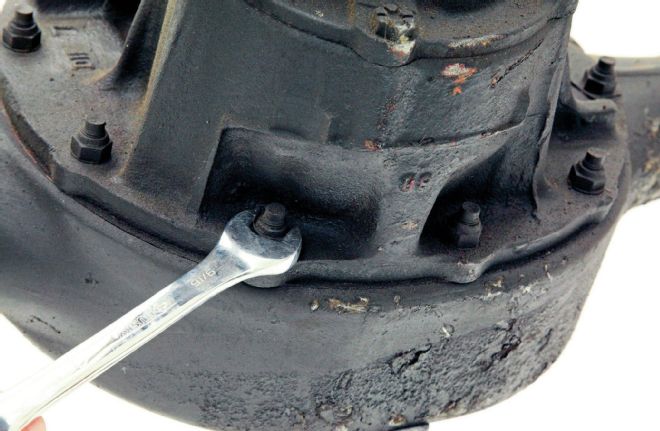
04 One quick identifier whether you have a 9-inch or some other rear is the bottom two nuts that secure the center section to the housing cannot be accessed with a standard socket. They have to be removed by an open-end wrench.
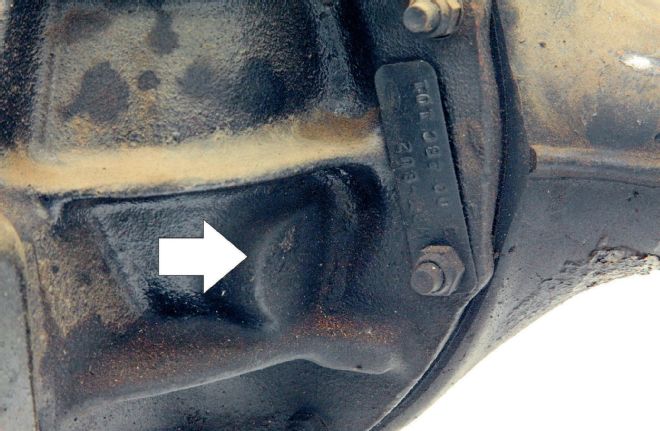
05 Early production units of the 9-inch center sections featured this boss that would eventually be drilled and tapped for a filler hole. Early units have the boss, but no hole.
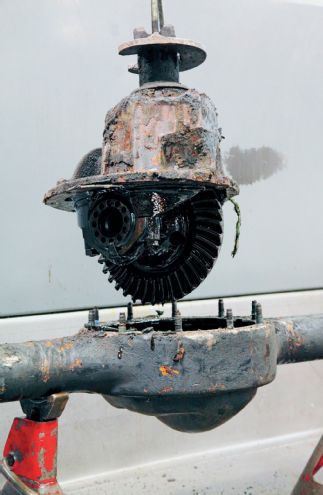
06 Once the brake assemblies and axles are removed, the center section is next.
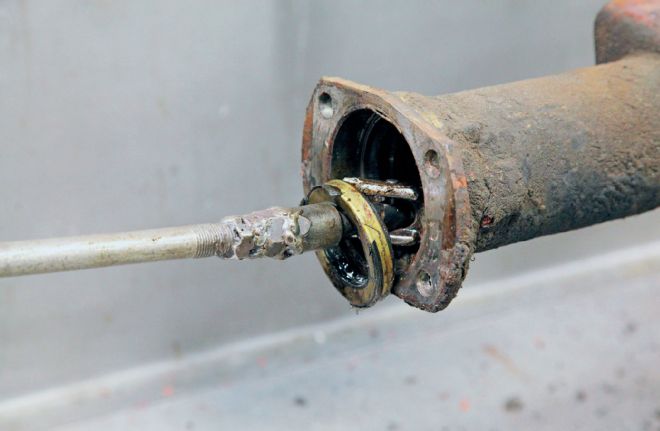
07 Measurements are made to record the stock rearend housing's specs. They'll use those numbers if the rearend width is to be modified.

08 The inner housing oil seals are also pulled from each axle tube.
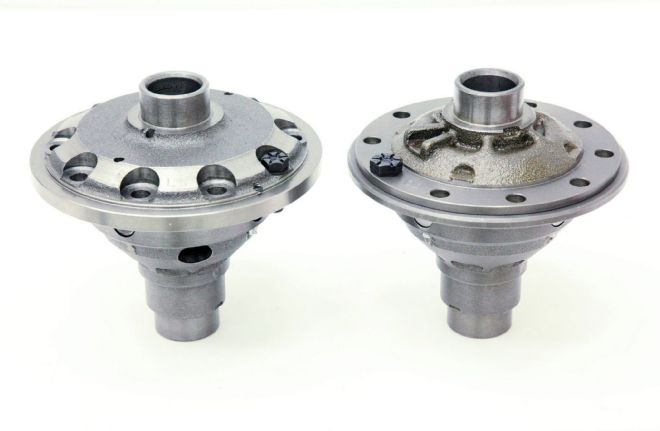
09 Here's a comparison of a new Currie nodular iron traction lock (left) and a new Currie nodular iron open differential, and an easy way to tell if a third member is a traction lock or an open unit when pulled out of a rearend. Note the difference in the size of the ring gear bolt head—the open diff uses a larger bolt head, and the traction lock unit uses a smaller head bolt so it fits into the cover's relieved area.
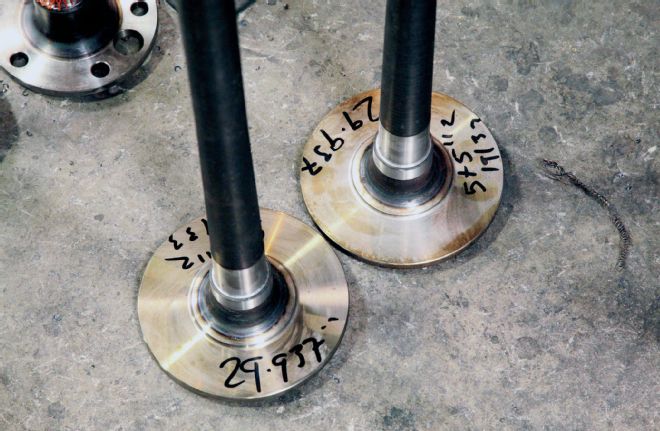
10 From left to right: the factory Ford sealed small bearing (2.834 inches o.d.), the factory Ford sealed large bearing (3.150 inches o.d.), and the factory Ford (Timken) tapered large bearing (3.150 inches o.d.). The stock '69 F-100 rearend featured sealed large bearings, and Currie upgraded it to the tapered large bearing for heavier load capacity (for truck applications), as well as greater side-load capacity (hard cornering, for example).
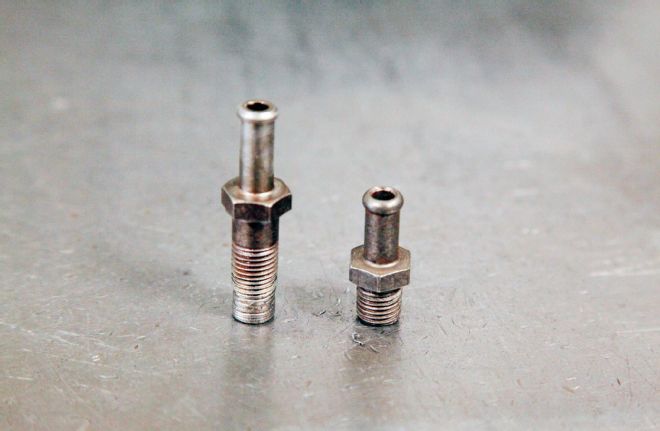
11 This is the first of several cleaning stages the rearend housing will go through (Currie is obsessed with "clean") during the build-up.

12 The new blank axles are first cut to the required length for this application. The notations on the back of the axle flange are the length, wheel bolt pattern, and the drill size for the wheel stud holes.
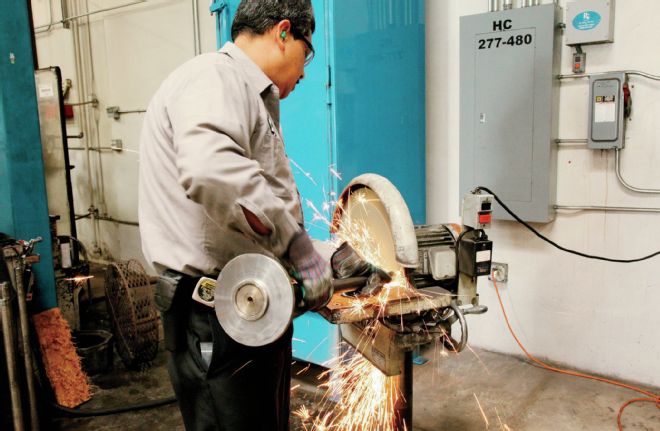
13 A quick chamfer by hand on the sander gives the end a beveled edge that allows easier assembly.
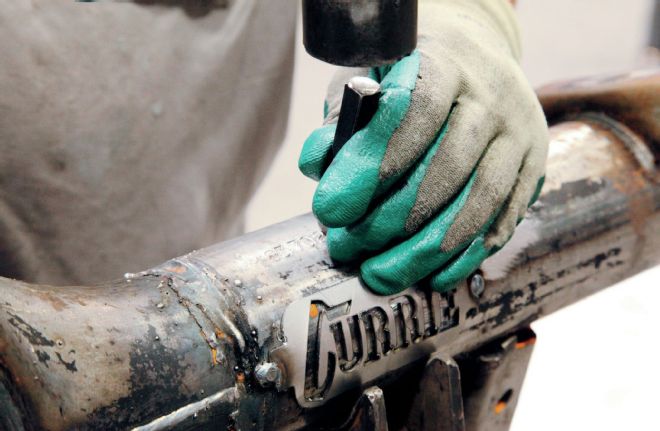
14 Once the housing is cut to the correct width, the serial number (Currie's work order number) is stamped into the axle tube.
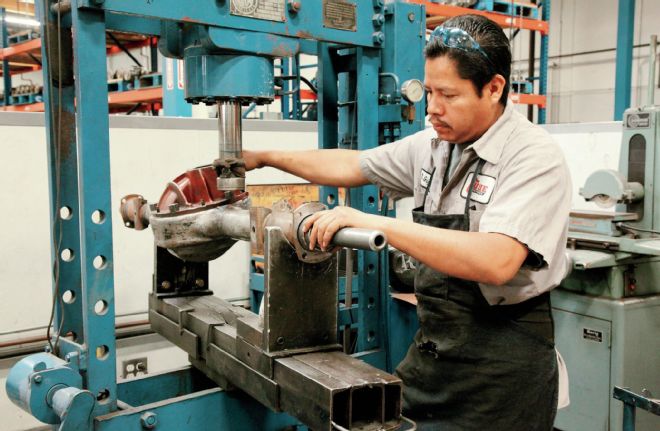
15 Here a technician is checking the old housing for straightness because they are often bowed from years of use, especially in truck applications.
But if you're concerned with restoration, or at least keeping the rearend that was in your ride for sentimental reasons, Currie will update it (they don't do "restorations" per se). It may not be cheaper than buying a new 9-inch from them but, if you gotta have the original housing in your truck and want new innards, they'll work with you just like they did with us.
For this application, Currie installed larger axle bearings, updated the 28-spline axles with 31-spline units, added a new pair of 11-inch drum brakes, and replaced the old third-member with a new 3.70:1 unit. The only thing not replaced was the housing itself, which still had the original leaf spring pads in place.
So follow along to see how Currie does it and, keep in mind, we were only able to capture a portion of all the measuring and rechecking of the parts and pieces during the build process—they're obsessed with it!
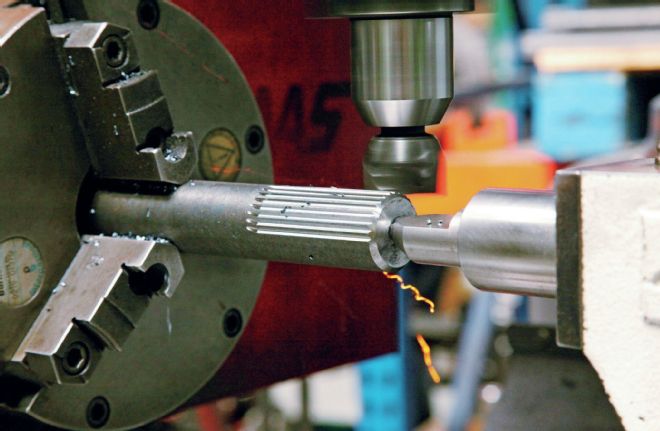
16 The 31 axle splines are now cut into the axle end. They are about 2 inches long, which allows for adjustment when the rearend is assembled.
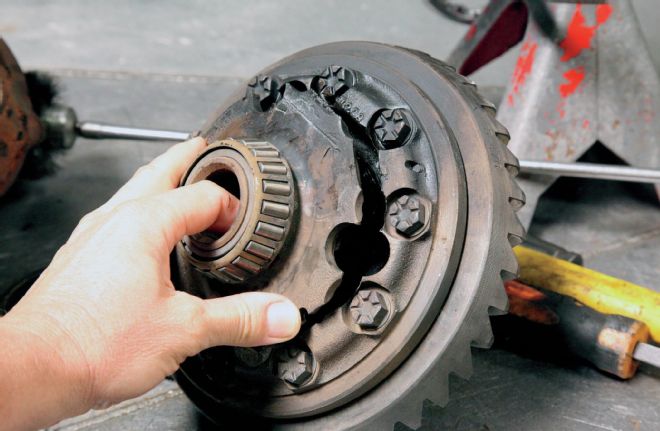
17 The axles are then popped into another CNC machine that drills the appropriate bolt circle, 5x51⁄2-inch for our application.
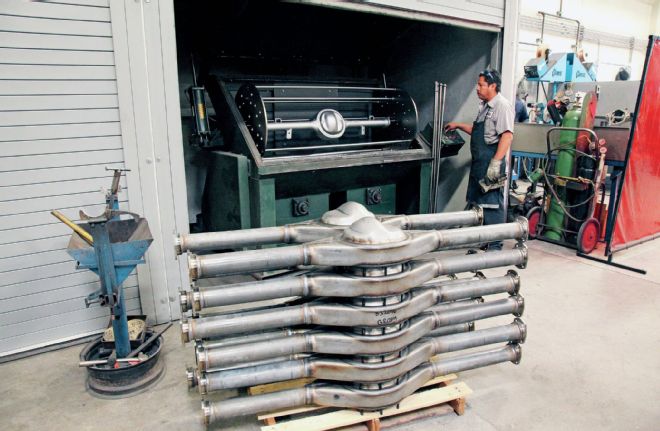
18 The last cleaning machine shot peens the housing so it comes out looking factory fresh.

19 This is why you may want to steer clear from buying used rearends: this assembly actually was working when it was in the truck, but literally blew apart during the teardown as it had been severely mistreated sometime in its life!
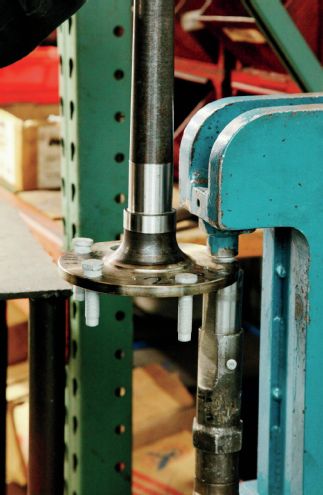
20 Once the axles were cut for length, splines machined, and bolt circle drilled, new wheel studs were pressed in place.
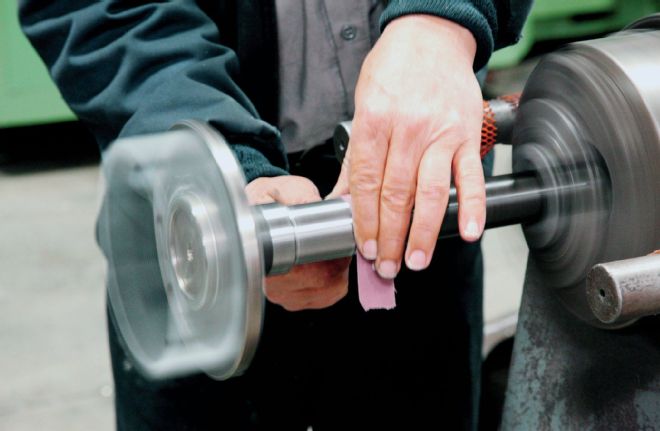
21 Polishing this area of the axle on the lathe provides a better seal surface for the axle's oil seal.
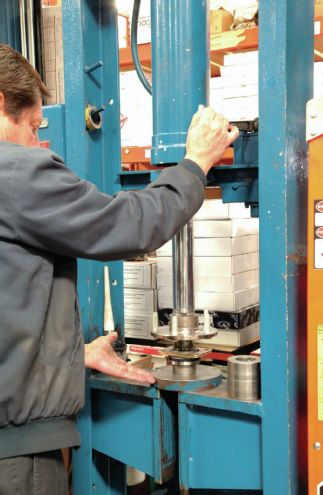
22 Next, the bearing and retainer plate are pressed onto each axle.
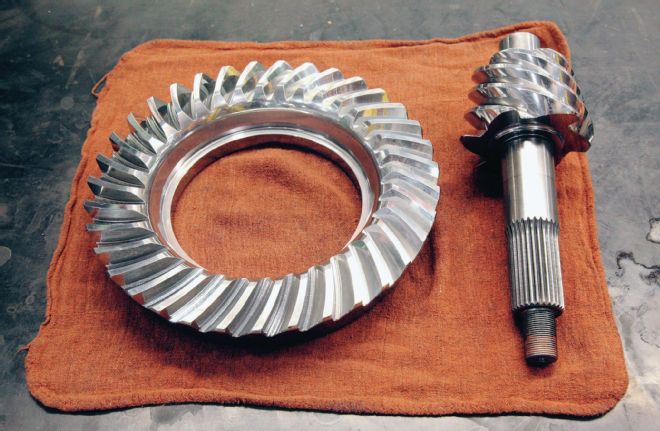
23 Though the procedure was not done with this rearend, one option that Currie offers is to micro-polish the ring and pinion gears. The result is a reduced operating oil temperature of up to 85 degrees.
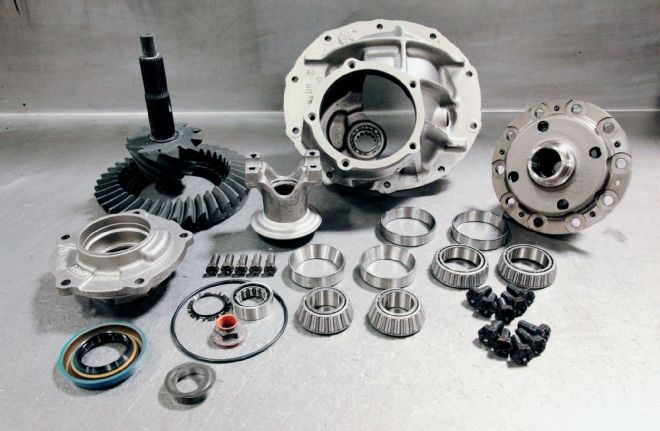
24 Here are all the parts needed to assemble a new Currie third member.
25-26 Once partially assembled, the bind between the ring and pinion is tested, measured, and retested until tolerances are met.

27 The tall vent on the left is the factory '69 F-100 vent, which is longer so it can also attach the brake block (on the end of the brake flex hose) to the housing. Currie used the shorter version (both are 7⁄16-inch-20 thread) to give the rearend a cleaner look and allow the builder to relocate the brake line and block to a less conspicuous location.
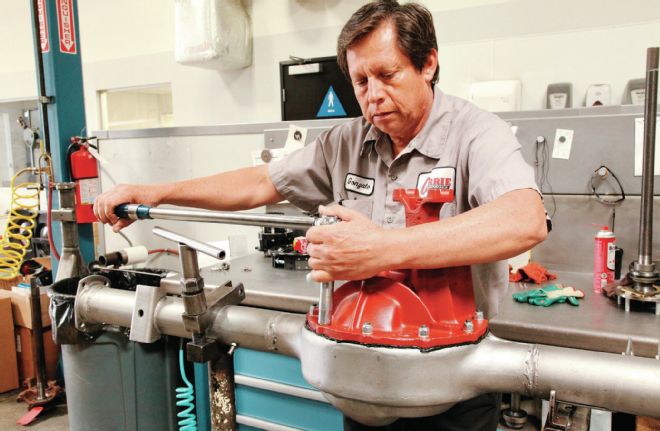
28 With the third member assembled and painted, it's time for it to be dropped into the housing.
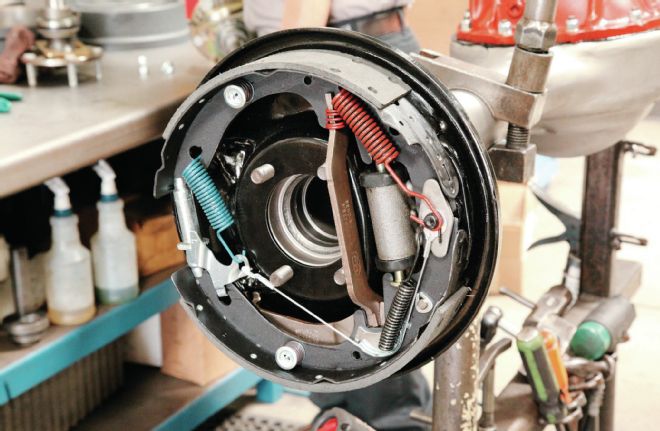
29 Newly restored and rebuilt 11x21⁄4-inch brake assemblies (which include the backing plates) are available through Currie and were added to each end.
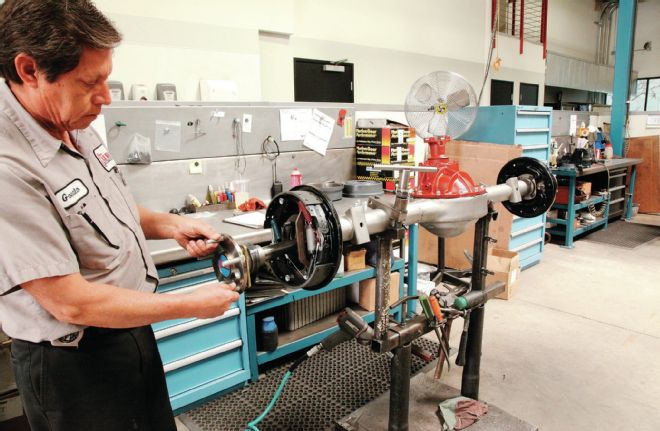
30 The axles are then slid into place, the retainer plates torqued to spec to the housing, and the brake drums are then slid into place.
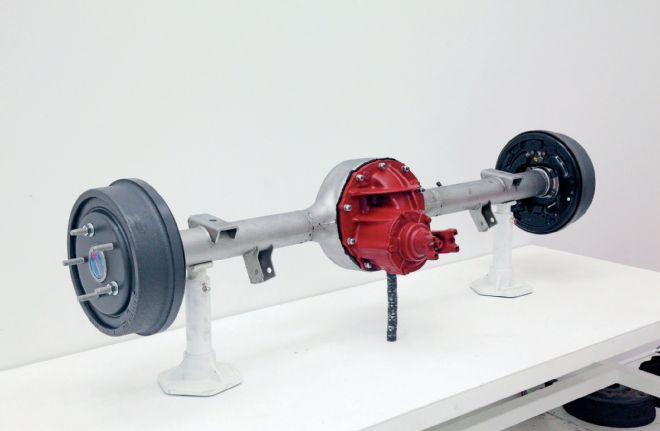
31 The final product ready to drop under our newly lowered '69 Ford and strong enough to handle all the power our 360 engine can muster.